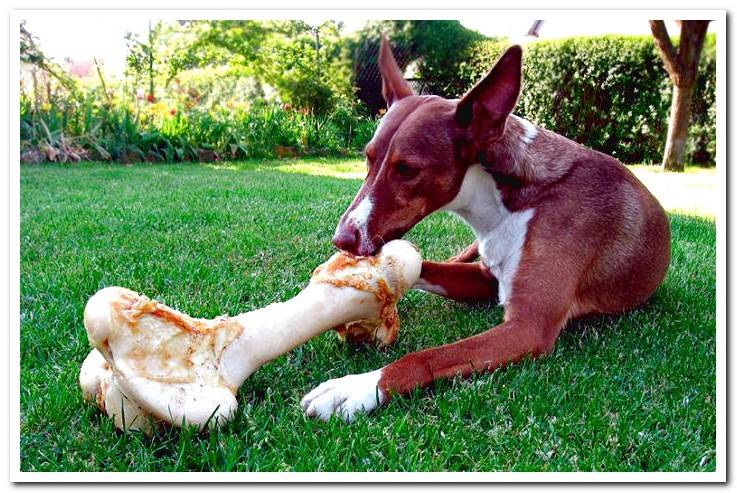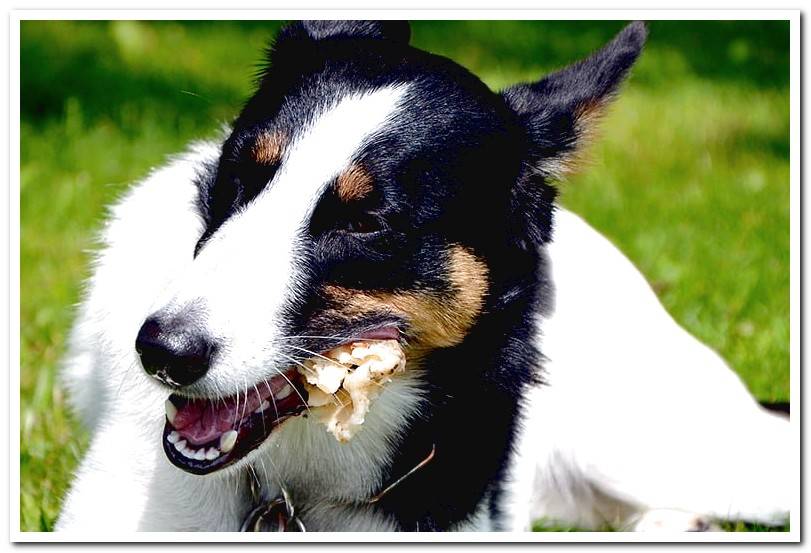
Bones have always been considered a typical dog food, but are they really healthy for them? Should they be part of your diet? And, if so, which ones and how do we offer them to you?
Next, we will explain what benefits the bones included in the dog’s diet can provide and, on the contrary, what risks they pose, especially depending on the type we choose and the way of preparation.
Index of contents
- 1 Are bones in dogs’ diet beneficial?
- 2 Dangers of bones in the canine diet
- 3 Are cooked bones healthy?
- 4 How to Give Bones to a Dog
Are bones in dogs’ diet beneficial?
Supporters of bone consumption point out that these provide minerals such as calcium and phosphorous, in addition to magnesium, sodium, iron and zinc. They also contain protein and cartilage, which is a type of connective tissue made up of collagen. In addition, if we offer bones with marrow we take advantage of the nutritional value of this area.
It is in which blood cells are formed, although it also contains more fat. In addition to this nutritional contribution, dogs are highly entertained with the bones.. They offer mental stimulation and relaxation. They can gnaw on them, which relieves them during the exit of the definitive teeth, transport them and hide them, if they have a place to do it.
They also contribute to dental hygiene by facilitating the cleaning of food debris that may have been lodged between the dental pieces, thus avoiding tartar appearance. The best bones to include in our dog’s menu are meaty, soft and well covered with meat. There are also so-called recreational ones, such as beef knee or marrow.

Dangers of bones in the canine diet
On the other hand, other experts advise against including bones in the diet of dogs. Are they based on the fact that they consider that their nutritional value is “practically nil”? and they can also cause health problems, some of them very serious.
Bone supporters also agree on this point when they point out that poor choice or inadequate preparation can have negative consequences. For example, small or meatless bones can easily cause choking. These are some of the most frequent problems:
- Breakage or abrasion of dental pieces.
- Airway obstruction. If the bone remains lodged in the trachea, the dog can drown.
- Injury to any point in the digestive system, which begins in the mouth and ends in the anus. They can range from small injuries to severe tears with fatal consequences such as peritonitis.
- Obstruction of the digestive tract at any point. It can be complete or partial and its severity depends on it.
- Constipation and difficulties with evacuation due to hardening of the stool. Blood may appear in the anus or in the stool itself, which will be whitish in color and hard in consistency.
Any sign of respiratory distress is an emergency. The dog has to go to the vet immediately. Restlessness, rubbing the mouth with the paws, hypersalivation or retching are warning signs. If we notice other symptoms such as severe abdominal pain, vomiting or immobility, peritonitis could have occurred.
There may be an anorectal obstruction. For their part, vomiting, diarrhea, pain or bloating are signs of partial or complete intestinal obstruction. If the dog constipates every time you feed it bones, reduce the amount you offer.
Are cooked bones healthy?
Specifically, the problem with bone cooking is that, during this process, the bone structure can weaken. In that state, it is easier for them to splinter and these bone fragments become very dangerous for dogs.. They can get choked or even cause a perforation in the gastrointestinal tract.
How to Give Bones to a Dog
Dogs can consume raw bones. Before offering them, it is advisable to freeze them to eliminate possible parasites that they may contain. Remember to choose meaty bones, that is, surrounded by a large amount of meat. Approximately, the piece that we offer should have the same amount of bone as meat.
Avoid those of small size and with little meat. Adjust the bone size to that of the dog. Check that you cannot swallow it whole and choke. We can offer this type of bone occasionally, as a prize, subtracting it from the dog’s daily ration.
If we want to prepare food homemade how the BARF diet and having bones as one more ingredient, we have to contact a specialist in canine nutrition. Otherwise we run the risk of offering an unbalanced diet that can result in health problems for our dog.
